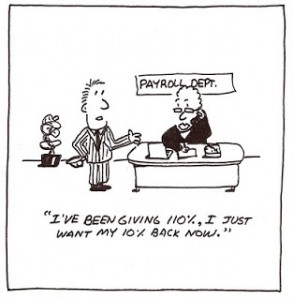A Summary of changes to UK tax and NI rates and thresholds from April 2022
Employers and Employees
Minimum and living wage rates increase from 1st April 2022
| 23 and over | 21 to 22 | 18 to 20 | Under 18 | Apprentice | |
| April 2021 (current rate) | £8.91 | £8.36 | £6.56 | £4.62 | £4.30 |
| April 2022 | £9.50 | £9.18 | £6.83 | £4.81 | £4.81 |
The Employment Allowance will increase
From April 2022 the employment allowance, which reduces employer’s national insurance contributions for certain employers, will increase to £5,000. Employer’s NIC rates and thresholds remain unchanged.
The planned increase to National Insurance rates will go ahead
The rate of National Insurance will increase by 1.25 percentage points between 6th April 2022 and 5th April 2023. After 5th April 2023, the increase will be replaced by a separate Health and Social Care Levy.
Class 1 and Class 4 National Insurance thresholds will increase
From July 2022, the threshold at which employees start paying Class 1 National Insurance contributions – which is currently £9,569 and will rise to £9,880 in April 2022 – will increase again to £12,570. This means that employees won’t have to start paying National Insurance until they have earned a minimum of £12,570 in a single tax year, though there may be special arrangements for the 2022/23 tax year.
As NIC is paid according to the pay period, and is not cumulative, only nine months of earnings (from July 2022 to March 2023) will benefit from the higher PT.
Sole Traders and Self-employed
Class 4 NIC
The threshold for Class 4 National Insurance contributions – which self-employed people pay on their profits – will also increase from July 2022. Currently £9,569 and £9,880 from April 2022, the threshold will increase again in July to £12,570.
The class 2 small profits threshold (SPT) will remain in place from April 2022, but the individual will not be liable to pay class 2 NIC until their profits exceed the lower profits threshold for the tax year, which is aligned with the lower profits threshold for class 4 NIC.
| Tax year | Flat rate per week | Small profits threshold | Lower profits limit |
| 2022/23 | £3.15 | £6,725 | £11,908* |
| 2023/24 | TBA | TBA | £12,570 |
*effective limit for the year with the first 13 months at £9,880 and the remainder from July at £12,570.
New class 2 NI credit
Where the individual has annual profits between the SPT and the LPL, they will effectively build up a NI credit for that year, while paying zero class 2 NIC. Note that the taxpayer has to make profits at least equal to the SPT for the year in order to benefit from this class 2 NI credit.
In order to receive the class 2 NI credit the taxpayer will have to submit a tax return, although if they have no other income in the year they will have no tax to pay.
The introduction of the class 2 NI credit does not eliminate the need for voluntary class 2 NIC payments. Where the trading profits are less than the SPT the individual may still wish to pay voluntary class 2 NIC in order to maintain their contribution record and qualify for the state pension, as well as for other contributory benefits.
Class 2 National Insurance rules will change
From April 2022, sole traders whose annual profits fall between the Small Profits Threshold and the Lower Profits Limit will be able to claim that year as a qualifying year for contributions towards the State Pension and other benefits, without paying Class 2 National Insurance.
The Small Profits Threshold is currently £6,515 and will rise to £6,725 on 6th April 2022. The Lower Profits Limit is currently £9,569. It will rise to £9,880 on 6th April 2022 and will increase again in July 2022 to £12,570.
Personal Income Tax
The basic rate of Income Tax will decrease
In April 2024, the basic rate of Income Tax in England, Wales and Northern Ireland will decrease from 20% to 19%. It’s not yet known whether any equivalent change in Scotland, where rates are set by the Scottish government, will be introduced.
Dividend tax will increase by 1.25 percentage points in 2022. The new dividend tax rates for 2022/23 tax year (factoring in the 1.25 point rise) are: 8.75% (basic), 33.75% (higher) and 39.35% (additional).
Corporation Tax
Further news on capital allowances is expected in the Autumn Budget
The Annual Investment Allowance will remain at £1 million until March 2023. The Chancellor indicated that more news on the UK’s capital allowances regime can be expected in the Autumn Budget later this year.
This is just a brief summary of changes, please get in touch if you’d like assistance with your tax returns or employee payrolls. You can read the Spring Statement 2022 in full on the government’s website.





